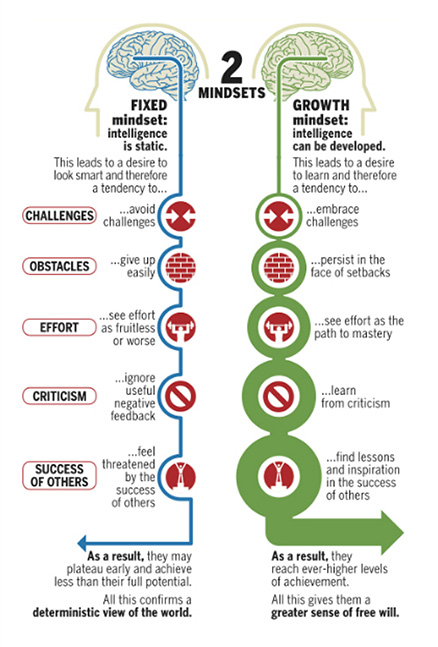“Culture” seems to be a buzzword these days. From the All Blacks, Manchester United or the Chicago Bulls, coaches seem to be highly interested in what a “high performance” culture is, how one is created and how they can instil a culture in their squad. With this in mind, I thought I would offer a real world example of trying to consciously improve the culture of a select group…

I’ve been working in rugby since October 2016. First as a contractor before starting fulltime over a year ago. One of the first tasks we undertook as a team was setting out how we could improve the culture within the academy, it is this process that I’ll discuss. Just to give some context, the players that were the focal point for this process were players aged 17-20 years old, most of which playing for national age grade squads, identified as having the potential to play at the professional or senior international level. As such, we were trying to prepare them for the rigours of playing at the highest levels possible along with the expectations that that level brings. They were not an Under 11’s recreational team or similar scenario.
Identify KEY Values
As a team (Management, Technical Coach, Physio, S&C) we discussed the values we thought were most important within the academy. We brain stormed many of these, condensing them down into the most vital and succinct values. We asked the athlete to do the same as a group. In doing so we gave them some autonomy in the process, improving the “buy in” as we were basically asking them for their ideas. As a fortunate turn of events we essentially came out with a list of the same or very similar values. As a collective we then decided to focus on just one value…

Identify the behaviours that match
As a collective we then discussed what behaviours were congruent with Accountability. What did it look like on a simple, day to day basis. Again, we wanted to keep this list short in order for it to be effective. We also wanted it to be within complete control of each individual player – something they could easily achieve. Simple day to day standards. As you can see from the image above we decided upon 3 simple things:
- Arriving on time (and in the right location)
- Having the right kit (trainers, boots, gumshield etc.)
- Applying 100% effort (gym, technical sessions, conditioning, physical testing etc.)
Select consequences
It is inevitable that despite the best intentions of every athlete, at some point someone would fall short of the standards we had set out. Standards continue to fall for as long as you will let them. So, in advance of this occurrence we decided that as a group there would be “consequences” (emphasis – not a punishment). Every action has a consequence, so failing to live up to certain standards would have a consequence. Not only that but as an individual’s behaviour reflects on both the athletes and staff in the academy, the consequences would be performed by the entire group. The consequences were set as follows. Failing to achieve the standard set would result in a dice roll. Depending what number the dice showed related to a particular consequence ranging from a silent walk around the pitch, cleaning a facility, forward rolls, a conditioning drill and more.
We made this process very clear, communicated it to all players involved and displayed both the values, behaviours and consequences within the walls of the academy.

Reinforce consequences
In the first few weeks we inevitably had a few people fall short of the standards. We would call the group together first thing that day, explain who had fallen short and why, roll the dice and complete the consequence. I should note at this point that many staff members also participated in the consequence. Whilst this process was repeated a few time in the first week or two, the frequency of this rapidly declined as suddenly the playing group start to take charge – calling people who looked like they were going to run late, or holding people to account if they looked like they were going to let the group down. This had a dramatic overall positive affect and over time the dice was used less and less and the standards across the group rose as the culture improved.
Gradually add the additional key values
Over time, we gradually added in two other values that the group had selected: “Perception” and “Winning”.

“Perception” related to how feedback was given to/from/between players.
- How does your body language communicate your: enthusiasm (or lack of), reaction to mistakes (yours or others), determination to make up for mistakes
- Being proactive in seeking out feedback from coaching staff
- Before you pointed the finger at another athlete, engage in self reflection and ask if you met the standards yourself
- Acknowledge the positive aspects of performance as well as the negative criticisms

In our initial meeting with the athletes “Winning” was a value that stood out. We wanted to acknowledge that winning was not purely about the scoreline of a match, but that each athlete had the opportunity to win, if they were making progression toward achieving their goals. Be it a personal best in the 10m sprint, Yo-Yo test or squat, reaching a certain body composition target, achieving a set percentage of completed tackles, being selected for an age grade national team, or gaining a professional contract. We wanted to do this to create a growth mindset focus, but also a focus on the process of becoming a better athlete. To reinforce this we added a records board to the gym, showing what the best physical standards achieved were for each position, challenging athletes to get their name up there.

Handily, our manager decided to reorganise the letter to spell “PAW”, also selecting a well muscled, aggressive looking bulldog to reinforce the type of athletes we were wanting to develop (athletic, aggressive, determined). He also came up with the slogan “Leave your mark” – a challenge to the athletes on what legacy they would leave behind upon departing the academy. Additionally we added an “Honours Board” listing the names of academy graduates who had gone on to gain professional contracts or international honours.
Reflecting on the beginning of this process some time ago, I can now see that it has had the desired affect and has been pretty successful in raising the standards of performance within the group. Occasionally we may have to blow the dust off the dice and reinforce the consequences, but for the most part the standards are met on a daily basis. A very large part in this is now in the autonomy of the playing group who will hold each other to account and express their frustration if someone fails to live up to the standards, exerting positive peer pressure if you will.
So, whilst to some this process may seem inappropriate for your particular context, is there any valuable lessons that you could draw from it?
How about:
- Discussing group values with your team or athletes?
- Asking them to select a couple of key values and behaviours?
- Writing these down and sharing them publicly (with both players/parents), or asking them to sign a code of conduct to the values?
- Discussing in advance the consequences of negative behaviours?
Perhaps you’ve already done the above and are having good success with it? If so – we’d love to hear your success story!
For more great content like this, like us on Facebook!
Are you a grassroots youth sport coach or PE teacher who wants to improve the athleticism of your athletes?? Check out our Fundamental series athletic development programs here.
